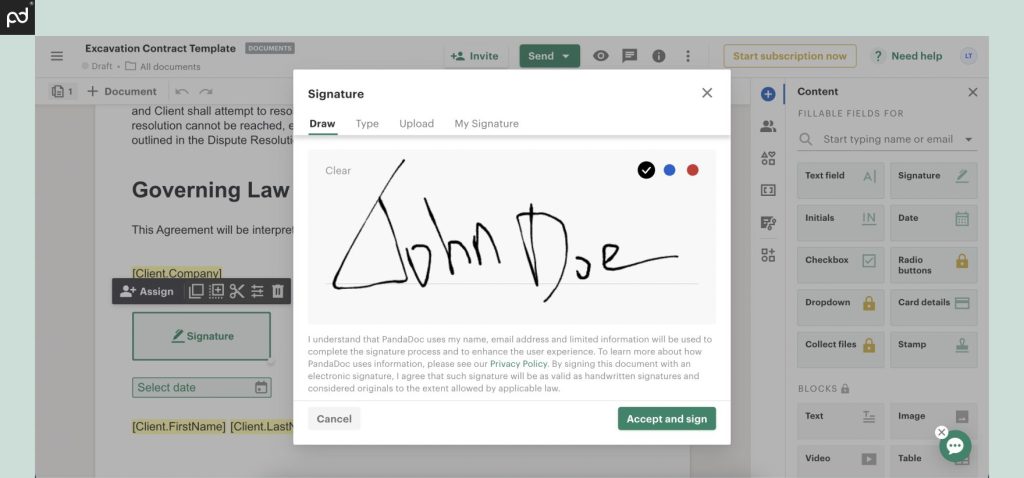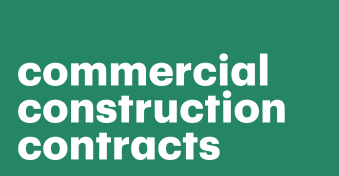When the project timeline and final costs are unknown, contractors prefer using time and materials construction contracts to price their work.
This type of contract allows the contractor to monitor the labor and materials used and create a detailed bill for the project’s owner.
However, with a time and materials contract, the owner runs the risk of being overcharged, and the contractor could also risk cutting into their profit margin if change orders are not clearly defined.
In this article, we’ll cover everything you need to know about time and materials contracts.
Continue reading to find out how to create a legally binding T&M agreement.
Key takeaways
- A time and materials contract gives contractors the ability to start working on a project without knowing the final cost or scope.
- Project owners use T&M contracts when they have established a system of trust with the contractor.
- Because of the open-ended nature around final project cost, time & materials contracts can result in disputes, which can disrupt the workflow and even escalate to legal action.
What is a time and materials construction contract?
A time and materials (T&M) contract is a construction agreement that allows the contractor to receive payment for materials as well as the hourly wage of builders and other laborers.
But instead of relying solely on the contractor’s discretion, the client usually asks for estimates based on the available project scope to determine whether it exceeds the established ceiling price.
This guardrail is called a not-to-exceed (NTE) clause. It sets a cap on what the project’s owner is willing to pay.
Components of a time and materials contract
A standard T&M contract contains the following construction clauses and sections:
- Scope of work
- NTE clause
- Terms of completion
- Force majeure clauses
- Breach of contract clauses
- Payment schedule and milestones
- Disclaimers, warranties, and waivers
- Certificates, licenses, and work permits
- Modification clauses and change orders
- Conditions for termination and suspension
- Inspection and risk management procedures
- Cost of materials (usually with a markup between 15% to 35%)
- Names, addresses, and personal information of stakeholders
- Minimum and maximum labor hours (and hourly labor rates), overheads, admin expenses, indirect costs, administrative costs, etc.
Applications of T&M contracts
Time and materials agreements are used when the duration and scope of the project are not properly defined.
This can apply to any size project, including massive real estate and public works construction.
Owners can also use a T&M contract when they are comfortable paying contractors an hourly rate, even with unprecedented changes.
And contractors utilize T&M contracts for emergency reconstruction and repairs when there is little time to get a fixed price upfront.
In an unstable economy with unpredictable hikes in material prices, the contractor can opt for a time-and-materials contract to avoid slashing their profits — whatever the cost of materials ends up being, it’s covered by the project owner.
Why use T&M contracts in construction?
The benefits of T&M contracts differ for property owners and contractors.
For property owners
Time and materials contracts provide the flexibility to start work first and figure out the cost of the project later.
This kind of agreement is important for urgent construction projects.
T&M contracts also make room for change orders and scope adjustments at any stage of the construction project.
Since the contractor must provide a detailed bill of quantities and materials, the owner can monitor the spending and budget in near real time.
For contractors
Contractors can get to work with a guarantee that the project owners will compensate them for everything, including additional or unforeseen work outside the initial scope of the project.
This builds mutual trust between contractors and clients, which is a guarantee for future cooperation.
T&M contracts also reduce the amount of work builders need to do during the pre-construction phase, thus decreasing the number of labor hours.
With proper calculation and solid project management, the contractor can increase their profits significantly.
What are the drawbacks of T&M contracts in construction?
Let’s check out the disadvantages of using T&M construction agreements.
For property owners
Since the property owner is getting billed by the hour, they might need a supervisor on standby to make sure the builders are actually working.
The drawback to this close monitoring in the construction industry is that builders and laborers can misinterpret this “hawkeye” treatment as micromanagement.
Even with a not-to-exceed clause, you can’t account for inflation and price increases —- which might become an issue as the project comes to a close.
Since there are no incentives for fast completion, the contractors will come up with excuses to delay the project and run up the bill.
After all, the longer they spend on the job, the larger their markup rate and eventual profits.
For contractors
Not having a clearly defined scope from the start is a recipe for contractual disputes and mistrust.
Moreover, contractors have to constantly track and account for every penny that goes into the actual cost of materials and labor.
If the price goes up significantly or other unforeseen events occur — and allocations for change orders aren’t clearly stipulated in the contract — the contractor may be cutting into their profit to pay subcontractors.
This can sour the relationship if the contractor has to shoulder the initial cash flow for labor, materials, and overhead.
| Pros | Cons | |
|---|---|---|
| Contractors | Provides the flexibility to accommodate change orders | Prone to disputes due to lack of a clear scope. |
| Contractors | Helps to monitor spending in order to maintain the profit margin. | Adds more administrative work to the contractor’s plate |
| Owners | Important for urgent construction and reconstruction projects. | Relinquishes control to the contractor. |
| Owners | Caps spending using the NTE clause and close monitoring. | Requires close monitoring to avoid cost-cutting and overcharges. |
Time and materials contract vs. fixed price contract
Under the fixed price contract (lump sum contract), the client pays a lump sum for the entire project upfront based on estimates.
This gives the contractor a guaranteed maximum price for labor and materials.
Conversely, the T&M contract does not offer a fixed lump sum. You have to track every billable hour and building material to get reimbursed afterward.
Also, T&M contracts are prone to disputes, accusations, and lawsuits, while fixed-price contracts are more straightforward.
How to create a viable time and materials contract
Here are the steps to follow to create a legally binding time and materials contract that will save all stakeholders unnecessary stress.
Step 1 — Cover every aspect of the construction
Always make sure every clause in the project is clear and unambiguous.
Since you don’t have a complete scope upfront, you need to understand the client’s expectations and milestones.
For clarity and transparency, document everything in a final written agreement before getting to the job site.
Step 2 — Set a realistic budget
Both the owner and the contractor should reach a reasonable agreement about costs.
The NTE clause should give the contractor enough room to remain profitable in spite of changes.
To this effect, all change orders should be clear and ambiguous — and in line with the terms of the agreement.
Step 3 — Add all necessary documents
Here are some important legal documents that should accompany your time & materials contracts.
- Blueprints, specifications, and designs
- Certification, permits, and licenses
- Bill of quantities (bill of materials)
- Agreements with subcontractors
- Warranty and insurance
- Safety protocols
In states like New York, you might need additional local permits as a professional engineer or registered architect for specific types of construction. Add them to the contract.
Step 4 — Seek legal assistance
A lawyer well-versed in construction law should review the contract to certify that you’ve covered all your bases.
They will also review every detail of the agreement to ensure that it is legal and enforceable under governing law in your jurisdiction.
Step 5 — Get the contract signed
With the lawyer’s approval, you can sign the contract using a contract management solution.
This tool will help you embed signature fields for other stakeholders and keep track of any proposed changes or alterations.

Step 6 — Save the contract and start working
It’s time to get to work. Stash the signed digital contract in an online repository, and start gathering your equipment and personnel to start building.

How can I avoid issues when using a time and materials contract?
T&M contracts leave room for uncertainty, which opens the door to conflict and misunderstandings.
Here’s how to avoid these problems:
- Keep the fixed hourly rate within the budgeted labor costs.
- Conduct regular inspections and provide timely updates.
- Confirm all change orders fall in line with the terms of the contract.
- Keep detailed records and make sure your accounts are in order.
- Follow all industry regulations to avoid fines, site closure, and suspension.
- Communicate clearly with your partners to stay aligned on project requirements.
- As the owner, choose a reputable contractor who won’t resort to shady practices to cut costs and overcharge you.
How contractors use PandaDoc to manage T&M contracts
PandaDoc is a contract management solution that both contractors and property owners can use to draft, negotiate, redline, update, and sign legally binding agreements.
This platform has a vast library of customizable T&M templates and other standard construction contract templates.
To monitor who has signed, updated, or viewed the document, you can use PandaDoc’s audit trail.
You can also embed signature fields to make it easier for clients to sign.
Disclaimer
PandaDoc is not a law firm, or a substitute for an attorney or law firm. This page is not intended to and does not provide legal advice. Should you have legal questions on the validity of e-signatures or digital signatures and the enforceability thereof, please consult with an attorney or law firm. Use of PandaDoc services are governed by our Terms of Use and Privacy Policy.


